Anatomy Madcham.de

Chameleon Anatomy
Chamaeleo calyptratus, the veiled chameleon, is the hardiest of the true chameleons and thus the most popular in the pet trade.This is one of the most striking chameleon species, with almost impossibly bold coloration and a casque atop the head that can reach 10 centimeters in height. Various theories have been put forth for the function of the casque: a device to aid in collecting water; a.

Panther Chameleon diagram comma comma comma chameleon Pinterest
2 Chameleon anatomy 7 Christopher V. Anderson and Timothy E. Higham 2.1 Musculoskeletal Morphology 7 2.2 External Morphology and Integument 37 2.3 Sensory Structures 43 2.4 Visceral Systems 50 3 Chameleon Physiology 57 Anthony Herrel 3.1 Neurophysiology 57 3.2 Muscle Physiology 59 3.3 Metabolism, Salt, and Water Balance 60
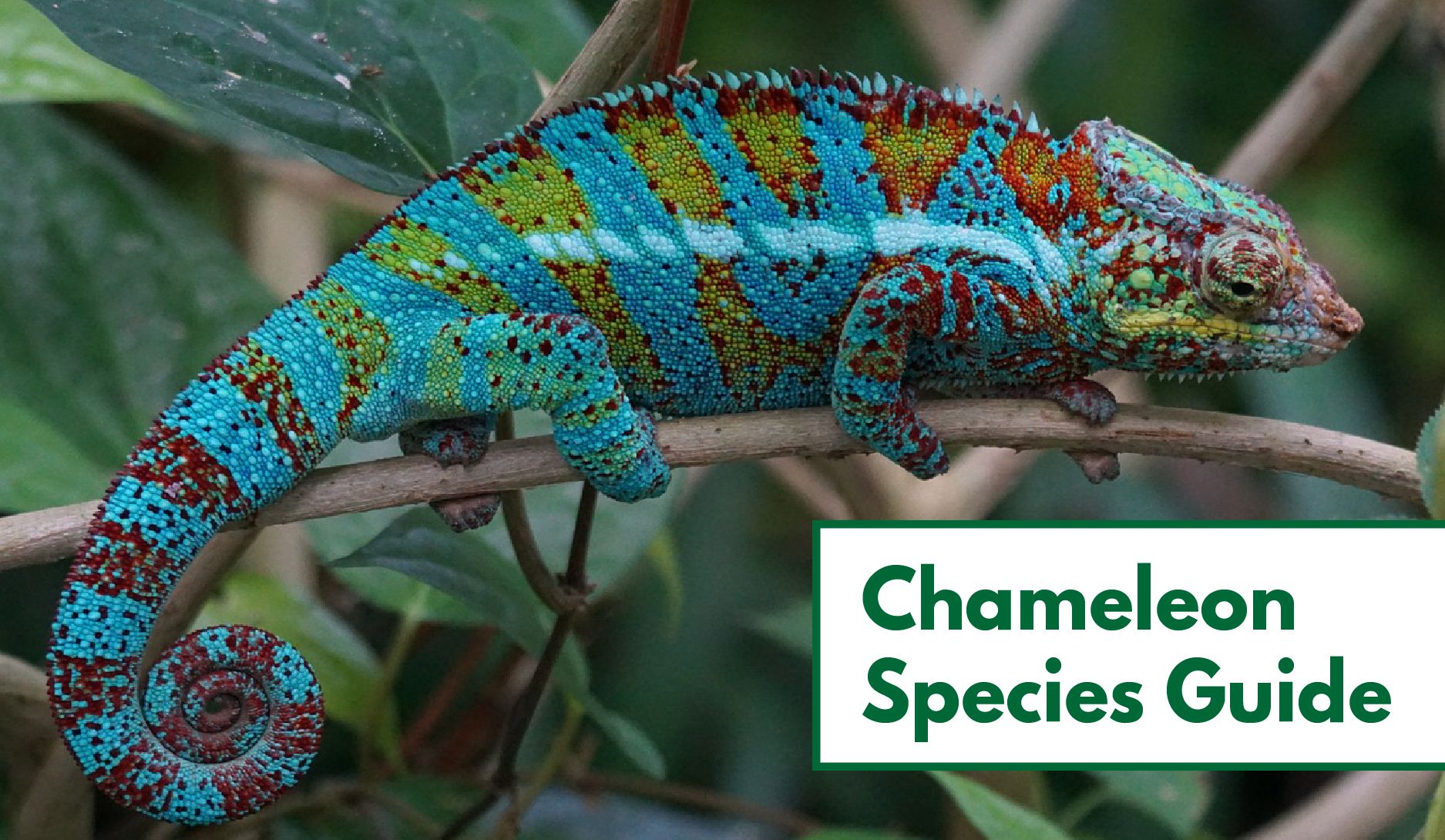
70+ Types of Chameleons (With Pictures) Chameleon Species Guide
Chameleons possess a host of physical adaptations which help them survive. Their hooded heads help them collect water in the form of dew and to also impress mates. Swiveling eyes help them pinpoint fast-moving prey. Color-changing skin helps them blend in, stand out to potential mates and intimidate rivals.
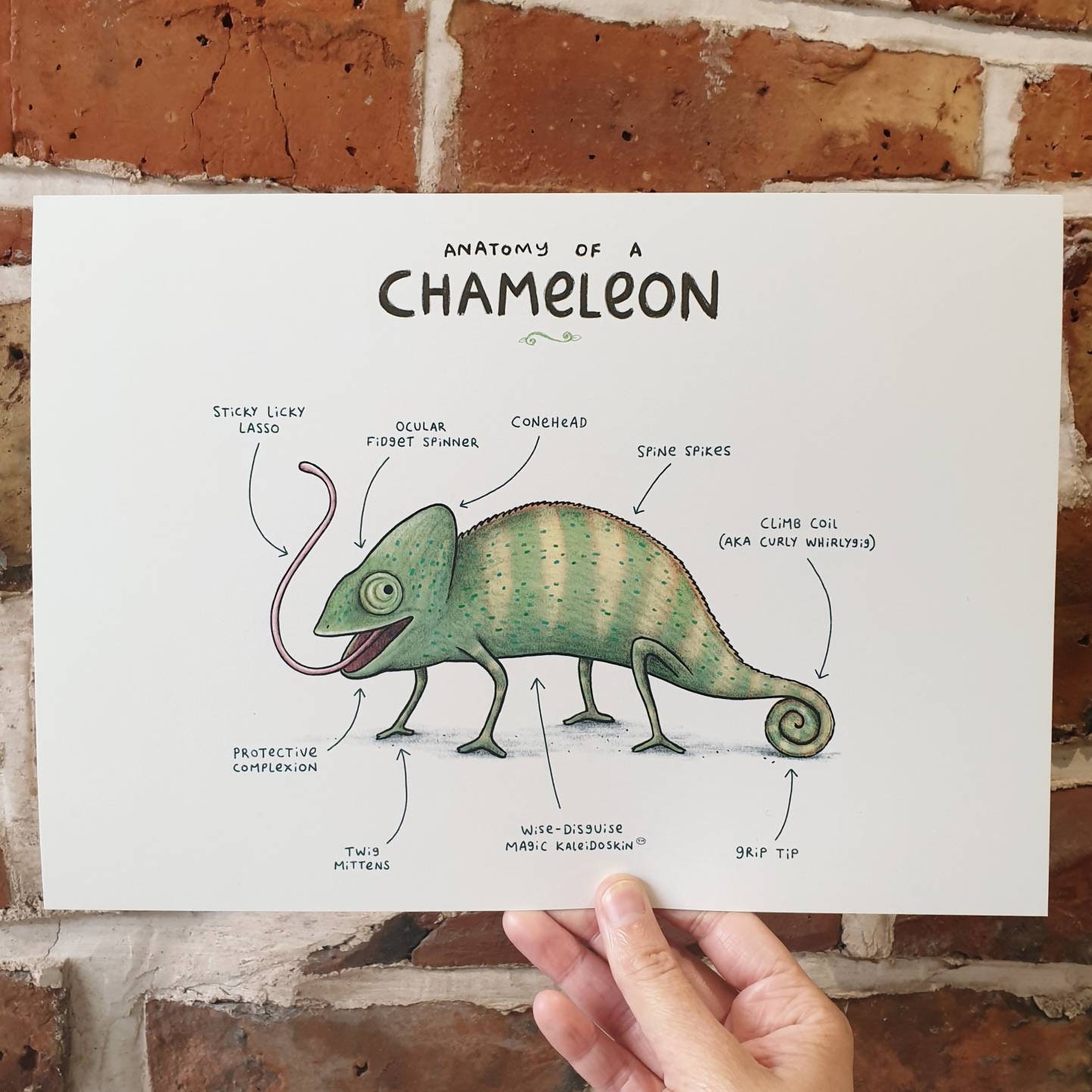
Anatomy Of A Chameleon A4 Signed Print Etsy
Chameleons are unique creatures that are known for their ability to change colors in response to their environment. Their fascinating abilities have captured the attention of both scientists and reptile enthusiasts alike. One of the best ways to understand these creatures is to explore their anatomy.
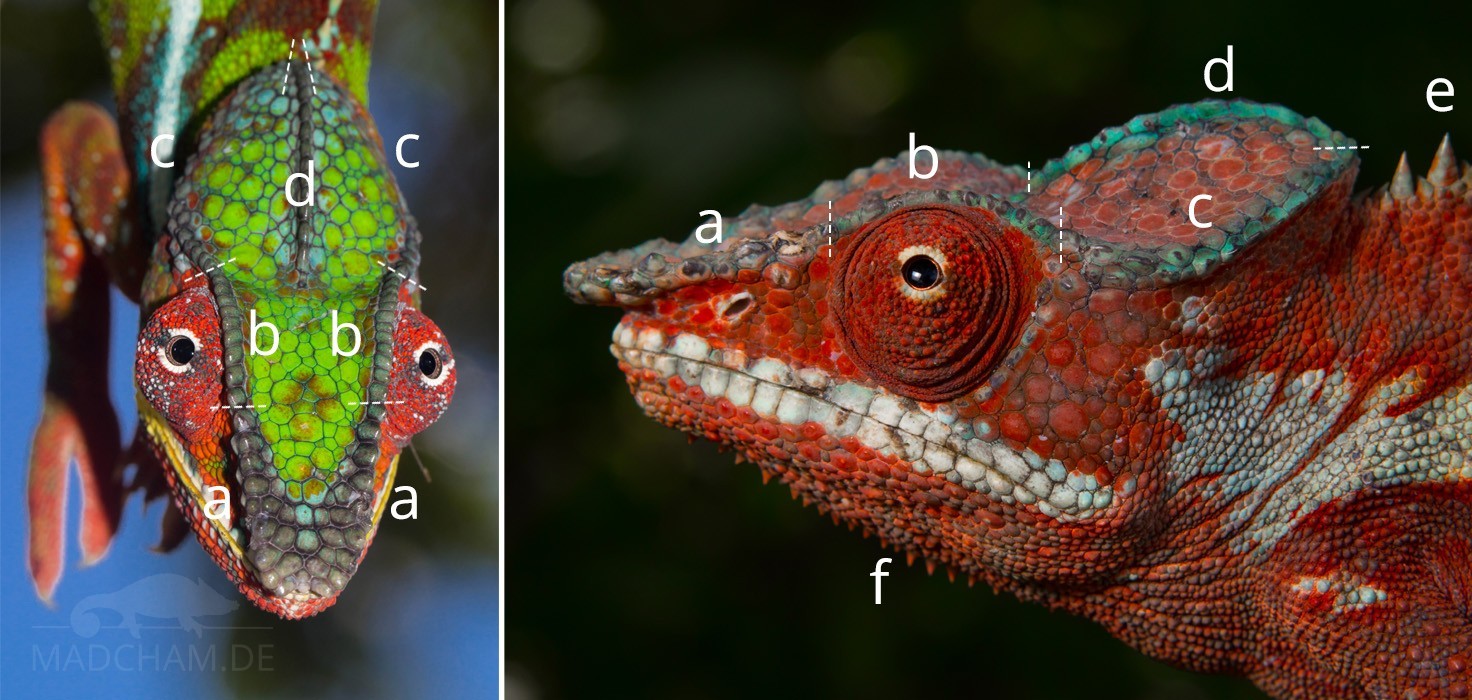
Anatomy Madcham.de
Common Name: Meller's Chameleon Scientific Name: Trioceros melleri Type: Reptiles Diet: Carnivore Average Life Span In The Wild: 12 years Size: 21 inches Weight: 14.4 ounces COLORFUL CRITTERS.

Chameleon Labeling Page Exploring Nature Educational Resource
Diet of the Chameleon. Most chameleon species are insectivores, but the larger species will also prey on larger animals. Depending on the size of the animal, they will eat crickets, ants, snails, waxworms, butterflies, caterpillars, smaller lizards, wasps, praying mantises, and flies. They use their tongues as projectile missiles, which they.

Anatomy of a chameleon My Pet Chameleon
Chameleon Label. Share Share by Wthomas4. Science. Show More. Edit Content. Embed. More. Leaderboard. Show more Show. Labelled diagram is an open-ended template. It does not generate scores for a leaderboard. Log in required. Theme. Fonts. Log in required. Options. Switch template.
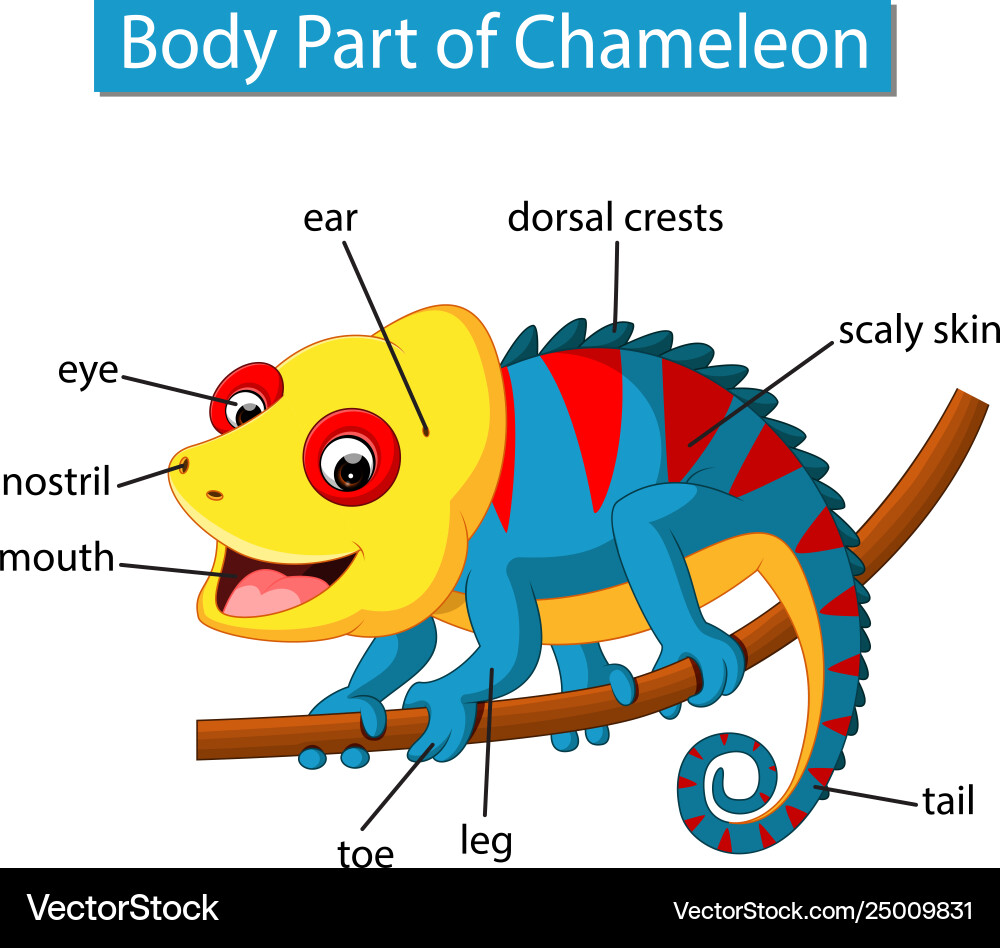
Diagram showing body part chameleon Royalty Free Vector
Chameleon has brightly colored scales, Chameleon eyes can face opposite directions, Chameleon has V-shaped feet, Chameleon has tail like a hand.. Labelled diagram is an open-ended template. It does not generate scores for a leaderboard. Log in required. Theme. Fonts. Log in required. Options. Switch template.

[ IMG] Chameleon, Dark heart
The style of citing shown here is from the MLA Style Citations (Modern Language Association). When citing a WEBSITE the general format is as follows. Author Last Name, First Name (s). "Title: Subtitle of Part of Web Page, if appropriate." Title: Subtitle: Section of Page if appropriate. Sponsoring/Publishing Agency, If Given.

I made an "honest anatomy" of my chameleon r/Chameleons
Bones are in light gray and connective tissue is in white. Originally published in Higham and Jayne (2004a). Schematic sulcal views of hemipenis morphology for F. lateralis (a), R. platyceps (b.

Chameleons Chameleon Forums
While chameleons are primarily associated with multiple species have capitalized on emerging habitats (grasslands and heathlands). fact, in some places, they occupy the entire strata from ground to high canopy. Ecology and Life History of Chameleons, summarizes the considerable body of the interactions of chameleons with their environment.

[chameleon anatomy], Image numberSIL333201 Chameleon, Anatomy, How to look better
مازِرونی. Oʻzbekcha / ўзбекча. ئۇيغۇرچە / Uyghurche. Chamaeleonidae) are a distinctive and highly specialized with 200 species described as of June 2015. The members of this family are best known for their distinct range of colors, being capable of shifting to different hues and degrees of brightness.

"Jackson's Chameleon Anatomy with Labels" by Anatomika Redbubble
Habitat. Veiled chameleons are arboreal lizards, meaning they prefer to live high up in trees or lower near the ground in bushes and shrubs. They can live in dry areas and are found on plateaus of mountainous regions, forests and valleys of southern Saudi Arabia and Yemen. They are one of the few species of chameleons.
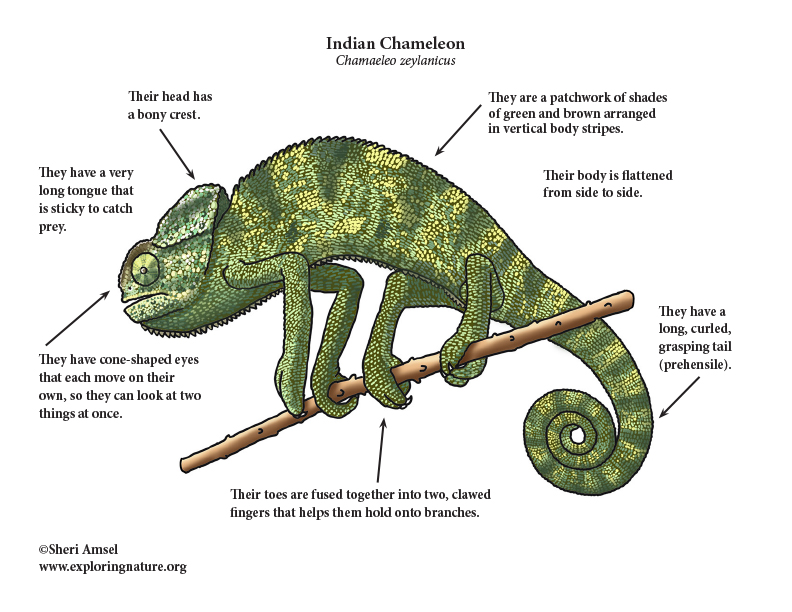
Chameleon (Indian)
Provide a 10-15°F (5-8°C) drop in temperature at night. Humidity/water. Maintain 40-60% relative humidity. Offer water either by misting the plants every 4-8 hours or with an automatic watering system. Cage size and design. Minimum cage size is 2 x 2 x 3 feet (0.6 x 0.6 x 0.9 m) but much larger is recommended.

Anatomy of a chameleon My Pet Chameleon
Veiled Chameleons, Chamaeleo calyptorarus, are a type of lizard that has the ability to change the color of their skin. They have a long, prehensile tail, a tremendously long, sticky tongue, and a helmet-like casque on the head.
taxo4254 Common Chameleon
When males meet each other, they react aggressively. They hiss, rock and curl their tails. They turn sideways and change the shape of their bodies from a narrow tube into a flat panel, filled with.